Transforming Power Distribution: Single to Three-Phase Conversion Techniques?
Are you struggling with power limitations in your facility? Maybe you’re wondering how to upgrade from single-phase to three-phase power without breaking the bank. You’re not alone in this challenge.
Converting from single-phase to three-phase power can significantly improve energy efficiency and equipment performance. This guide will walk you through the entire process, from understanding basic concepts to implementing the conversion, helping you make an informed decision for your power needs.

As an electrical engineer with over 20 years of experience, I’ve helped countless clients tackle this exact problem. In this comprehensive guide, I’ll share practical insights to help you understand and implement this conversion safely and efficiently. Whether you’re a seasoned pro or new to electrical systems, you’ll find valuable information here to power up your knowledge and your facility.
Understanding the Basics: Single-Phase vs Three-Phase Power Systems?
Have you ever wondered why your home uses a different electrical system than a factory? The answer lies in the fundamental difference between single-phase and three-phase power. But what exactly sets these two systems apart?
Single-phase power uses one alternating current, while three-phase uses three currents offset by 120 degrees. Three-phase is more efficient for large loads, delivering about 1.73 times more power with the same current and providing smoother operation for motors.
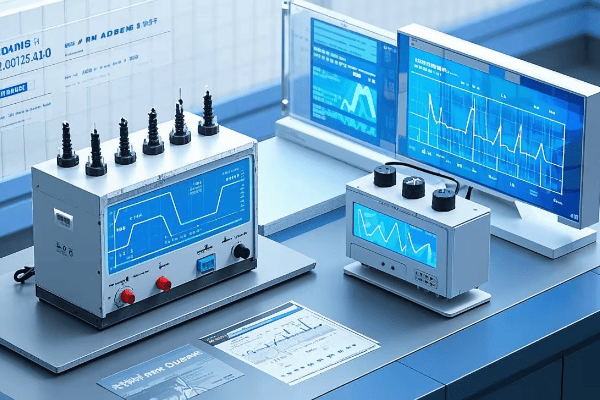
Let’s dive deeper into the world of power systems and explore the key differences between single-phase and three-phase:
Power Basics: Unraveling Single-Phase and Three-Phase Systems
-
Power Delivery:
- Single-Phase: One alternating current, two wires
- Three-Phase: Three alternating currents, three or four wires
-
Efficiency:
- Single-Phase: Less efficient for large loads (typically 70-80% efficient)
- Three-Phase: More efficient, especially for industrial applications (up to 95% efficient)
-
Applications:
- Single-Phase: Residential, small commercial (common in homes and small offices)
- Three-Phase: Industrial, large commercial, data centers (standard in factories and large buildings)
I remember a project where we were upgrading a small manufacturing plant’s power system. The owner was amazed to learn that switching to three-phase could reduce their energy costs by 15% and improve equipment performance. It was a lightbulb moment for both of us, highlighting the real-world impact of understanding these power systems.
Here’s a simple comparison table to illustrate the key differences:
| Characteristic | Single-Phase | Three-Phase |
|---|---|---|
| Number of wires | 2 (1 hot, 1 neutral) | 3 or 4 (3 hot, optional neutral) |
| Voltage waveform | One sine wave | Three sine waves, 120° apart |
| Power consistency | Pulsating | Constant |
| Typical voltage (US) | 120/240V | 208/240V or 480V |
| Load capacity | Lower | Higher (1.732 times more) |
| Motor starting | Less efficient | More efficient (30% better starting torque) |
| Typical applications | Homes, small offices | Factories, large buildings |
| Energy efficiency | Lower | Higher (up to 15% more efficient) |
Understanding these differences is crucial when planning your conversion from single-phase to three-phase power. It helps you appreciate the benefits you’ll gain and sets the foundation for the transformation process.
Assessing Your Needs: When and Why to Convert to Three-Phase Power?
Now that we understand the basics, you might be wondering: "Is converting to three-phase power right for my situation?" It’s a critical question that can significantly impact your operations and bottom line.
Converting to three-phase power is beneficial when you need to run heavy machinery, improve energy efficiency, or expand your power capacity. It’s ideal for industrial settings, large commercial buildings, and facilities with high power demands or motor-driven equipment.
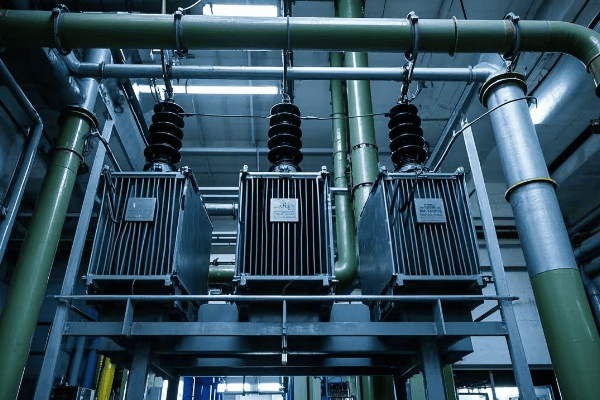
Let’s explore the scenarios where converting to three-phase power makes sense:
When Three is Better Than One: Scenarios for Three-Phase Conversion
-
Heavy Machinery Operation:
- Three-phase power is ideal for running large motors and heavy equipment
- It provides smoother operation and reduces wear on machinery
-
Energy Efficiency Improvement:
- Three-phase systems are more efficient, especially for large loads
- Can lead to significant energy cost savings over time
-
Power Capacity Expansion:
- Three-phase allows for higher power capacity without increasing wire size
- Essential for growing businesses or facilities adding new equipment
-
Voltage Stability:
- Three-phase power provides more stable voltage
- Critical for sensitive equipment or processes requiring consistent power
-
Future-Proofing:
- Many modern industrial and commercial equipment require three-phase power
- Converting now can prepare your facility for future upgrades
I once worked with a small printing company that was struggling with frequent equipment breakdowns and high energy bills. After assessing their needs, we determined that converting to three-phase power would solve their issues. Post-conversion, they saw a 20% reduction in energy costs and significantly reduced maintenance needs for their printing presses.
Here’s a decision matrix to help you assess if three-phase conversion is right for you:
| Factor | Consider Three-Phase If… | Stay with Single-Phase If… |
|---|---|---|
| Power Demand | Over 15 kW | Under 15 kW |
| Equipment | Large motors, industrial machinery | Small appliances, residential equipment |
| Facility Type | Factory, large office, data center | Small office, residential |
| Energy Costs | High, looking to reduce | Low, not a major concern |
| Future Plans | Expansion, adding heavy equipment | No major changes planned |
| Voltage Needs | Require higher or more stable voltage | Current voltage is sufficient |
| Budget | Can invest for long-term savings | Limited budget for upgrades |
Remember, converting to three-phase power is a significant decision. It requires careful consideration of your current needs, future plans, and budget. If you’re unsure, it’s always best to consult with a professional electrical engineer who can assess your specific situation.
The Conversion Arsenal: Tools and Equipment for Successful Transformation?
You’ve decided that three-phase power is right for your needs. Great! But what tools and equipment will you need to make this conversion a reality? Let’s gear up for success.
Converting to three-phase power requires specific tools and equipment, including phase converters or VFDs, three-phase panels, appropriate wiring, and safety gear. Proper selection and use of these tools are crucial for a safe and effective conversion.
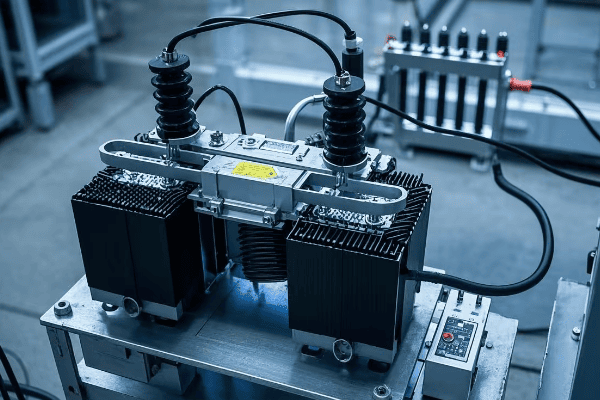
Let’s break down the essential components of your conversion toolkit:
Equipping for Success: Your Three-Phase Conversion Toolkit
-
Phase Converters:
- Static Phase Converters: Simple, cost-effective for motor loads
- Rotary Phase Converters: More versatile, good for mixed loads
- Variable Frequency Drives (VFDs): Offer speed control and soft start
-
Three-Phase Panels:
- Main Distribution Panel: Distributes power to sub-panels or equipment
- Sub-Panels: For specific areas or equipment groups
-
Wiring and Connectors:
- Three-Phase Cable: Properly rated for voltage and amperage
- Connectors and Lugs: For secure and safe connections
-
Safety Equipment:
- Voltage Tester: To ensure power is off before working
- Insulated Tools: Screwdrivers, wire strippers, pliers
- Personal Protective Equipment (PPE): Insulated gloves, safety glasses
-
Measurement Tools:
- Multimeter: For voltage and current measurements
- Clamp Meter: For measuring current without breaking the circuit
- Phase Rotation Meter: To ensure correct phase sequence
I recall a project where a client tried to cut costs by using inadequate wiring for their three-phase conversion. The result was overheating and a near fire. It taught me the importance of using the right tools and materials for the job, no matter what.
Here’s a checklist of essential tools and their uses:
| Tool/Equipment | Purpose | Importance |
|---|---|---|
| Phase Converter | Creates three-phase power from single-phase | Essential for conversion |
| Three-Phase Panel | Distributes three-phase power | Critical for power management |
| Three-Phase Cable | Carries three-phase current | Must be properly rated |
| Voltage Tester | Ensures power is off | Critical for safety |
| Multimeter | Measures voltage, current, resistance | Essential for testing |
| Insulated Tools | Protect against electrical shock | Important for safety |
| PPE | Personal protection | Crucial for worker safety |
| Phase Rotation Meter | Checks phase sequence | Important for proper motor operation |
Remember, the quality of your tools can significantly impact the success and safety of your conversion project. Invest in reliable, properly rated equipment, and don’t hesitate to consult with experts or rent specialized tools if needed. Your safety and the longevity of your new three-phase system depend on it.
Wiring Wizardry: Mastering Delta and Wye Connections?
Now that we have our toolkit ready, it’s time to dive into the heart of three-phase systems: Delta and Wye connections. But what are they, and how do they affect our conversion process?
Delta and Wye are two fundamental ways to connect three-phase systems. Delta forms a triangle, while Wye forms a star with a neutral point. The choice between them affects voltage relationships, current flow, and system grounding. Understanding these connections is crucial for a successful conversion.
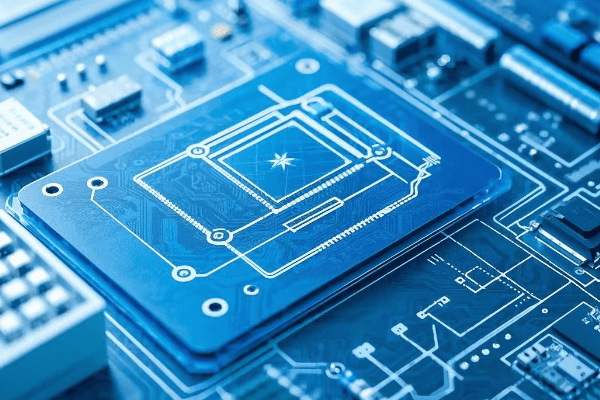
Let’s unravel the mystery of Delta and Wye connections:
Decoding Delta and Wye: The Core of Three-Phase Power
-
Delta Connection:
- Shape: Triangular configuration
- Voltage: Line voltage = Phase voltage
- Current: Line current = √3 × Phase current
- Uses: Often used on the primary (high voltage) side
- Advantages: Good for balancing loads, no neutral needed
-
Wye (Star) Connection:
- Shape: Star configuration with a neutral point
- Voltage: Line voltage = √3 × Phase voltage
- Current: Line current = Phase current
- Uses: Common on the secondary (low voltage) side
- Advantages: Provides a neutral for single-phase loads, good for unbalanced loads
I once worked on a project where we needed to power both heavy machinery and office equipment from the same three-phase system. By using a Delta-Wye transformer configuration, we were able to provide the high voltage needed for the machinery on the Delta side while having a neutral available for office equipment on the Wye side. It was a perfect balance of power distribution.
Here’s a comparison table to help you understand the key differences:
| Characteristic | Delta Connection | Wye Connection |
|---|---|---|
| Symbol | Δ | Y |
| Neutral point | No | Yes |
| Voltage relationship | VLine = VPhase | VLine = √3 × VPhase |
| Current relationship | ILine = √3 × IPhase | ILine = IPhase |
| Typical use | Primary side, high voltage | Secondary side, low voltage |
| Load balancing | Excellent | Good |
| Harmonic handling | Blocks 3rd harmonics | Allows 3rd harmonics |
| Ground fault detection | More challenging | Easier |
When converting from single-phase to three-phase, you’ll often encounter these connections:
- Delta-Wye Transformer: Common in distribution systems
- Delta-Delta: Used in some industrial applications
- Wye-Wye: Less common, but used in some specific scenarios
The choice between Delta and Wye connections depends on your specific needs, including voltage requirements, load characteristics, and grounding needs. It’s crucial to consult with an experienced electrical engineer to determine the best configuration for your conversion project.
Remember, proper connection is not just about getting power from point A to point B. It’s about ensuring efficiency, safety, and compatibility with your equipment. Take the time to understand these connections, and you’ll be well on your way to mastering the art of three-phase power distribution.
Safety First: Critical Precautions for High-Voltage Conversions?
As we gear up for the actual conversion process, we must address the elephant in the room: safety. Working with high-voltage systems is inherently dangerous, but how can we minimize risks and ensure a safe conversion process?
High-voltage conversions pose serious risks including electric shock, arc flash, and fire. Essential safety measures include proper personal protective equipment (PPE), lockout/tagout procedures, grounding, and adherence to electrical codes. Prioritizing safety can prevent accidents and save lives.
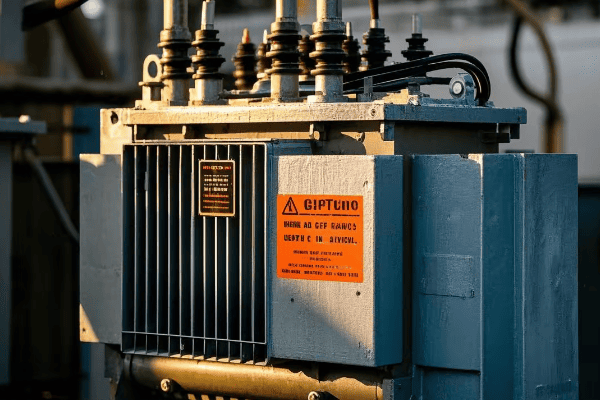
Let’s explore the critical safety precautions you should take during your conversion project:
Safeguarding Your Project: A Comprehensive Safety Approach
-
Personal Protective Equipment (PPE):
- Insulated gloves rated for the voltage level
- Arc-flash rated face shield and clothing
- Safety glasses and steel-toed boots
-
Lockout/Tagout Procedures:
- Identify all power sources
- Disconnect and lock out all electrical supplies
- Use "Do Not Operate" tags to prevent accidental energization
-
Grounding and Bonding:
- Properly ground all equipment
- Use temporary grounding cables during work
- Verify integrity of grounding connections
-
Workspace Safety:
- Ensure adequate lighting and ventilation
- Keep work area clean and free of obstacles
- Have a fire extinguisher rated for electrical fires nearby
-
Training and Certification:
- Ensure all workers are properly trained in electrical safety
- Verify certifications for high-voltage work
- Conduct regular safety briefings throughout the project
I once witnessed a near-miss incident where a technician, accustomed to different color codes, misidentified a live wire. This experience reinforced the importance of understanding and adhering to local standards, even for experienced professionals.
Here’s a comprehensive safety checklist for your conversion project:
| Safety Aspect | Key Actions | Why It’s Critical |
|---|---|---|
| Risk Assessment | Identify potential hazards | Prevents unforeseen dangers |
| PPE | Wear appropriate gear | Protects against shock and arc flash |
| Lockout/Tagout | Secure all power sources | Prevents accidental energization |
| Grounding | Properly ground all equipment | Protects against stray voltages |
| Insulation Testing | Check insulation integrity | Prevents insulation failures |
| Voltage Testing | Verify de-energized state | Ensures safe working conditions |
| Workspace | Keep area clean and organized | Reduces accidents and improves focus |
| Communication | Inform all team members of procedures | Ensures everyone is on the same page |
| Emergency Procedures | Know what to do in case of accident | Speeds up response in critical situations |
| Documentation | Record all safety steps taken | Provides accountability and learning opportunities |
Remember, no project is worth risking safety. Always prioritize safety measures and create a culture of safety awareness among all team members. It’s better to take extra time to ensure safety than to rush and risk an accident. If you’re not comfortable with any aspect of the conversion process, don’t hesitate to bring in professional help. Your life and the lives of your team members are far more valuable than any potential savings from DIY work.
Step-by-Step Guide: Implementing Your Single to Three-Phase Conversion?
Now that we’ve covered the essentials of planning and safety, it’s time to roll up our sleeves and dive into the actual conversion process. But how exactly do we transform our single-phase system into a functioning three-phase powerhouse?
Converting from single-phase to three-phase involves several key steps: installing a phase converter or VFD, upgrading the main panel, rewiring for three-phase distribution, and connecting three-phase equipment. Each step requires careful planning, precise execution, and thorough testing to ensure a safe and effective conversion.
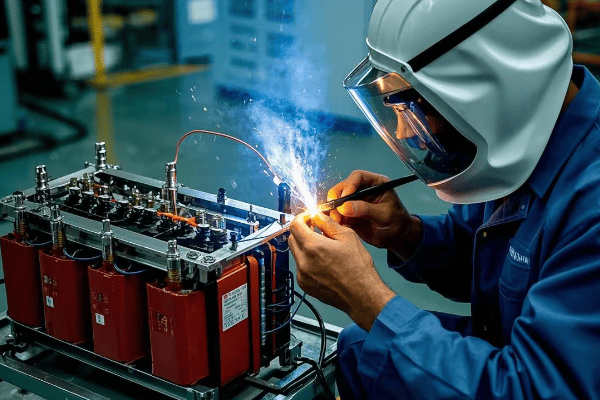
Let’s break down the conversion process into manageable steps:
From One to Three: Your Conversion Roadmap
-
Preparation:
- Conduct a thorough power audit
- Obtain necessary permits and approvals
- Gather all required tools and equipment
-
Install Phase Converter or VFD:
- Choose the right type and size for your needs
- Mount securely in a well-ventilated area
- Connect input and output wiring according to manufacturer’s instructions
-
Upgrade Main Panel: – Install new three-phase main breaker
- Add three-phase bus bars
- Ensure proper grounding and bonding
-
Rewire for Three-Phase Distribution:
- Run new three-phase wiring to sub-panels and equipment
- Use properly rated cables and connectors
- Label all new wiring clearly
-
Connect Three-Phase Equipment:
- Rewire or replace single-phase equipment as needed
- Ensure proper phase rotation for motors
- Install any necessary protective devices (e.g., overload protection)
-
Testing and Verification:
- Check all connections for tightness
- Measure voltages between phases and to ground
- Verify phase rotation and balance
-
Final Inspection and Power-Up:
- Conduct a thorough visual inspection
- Gradually power up the system, starting with main breaker
- Monitor for any issues during initial operation
I remember a challenging conversion project for a small factory in a remote area. We had limited resources, so precision was key. By meticulously following these steps and double-checking each connection, we successfully created a stable three-phase system that significantly improved their production efficiency.
Here’s a detailed checklist for the conversion process:
| Step | Action | Key Considerations | Potential Issues |
|---|---|---|---|
| 1. Preparation | Conduct power audit, obtain permits | Accurate load calculation | Underestimating power needs |
| 2. Install Converter | Mount and wire phase converter | Proper sizing and ventilation | Overheating, inadequate capacity |
| 3. Upgrade Panel | Install three-phase breaker and bus bars | Correct ampacity rating | Overloading, improper grounding |
| 4. Rewiring | Run new three-phase wiring | Proper cable sizing and routing | Voltage drop, overheating |
| 5. Equipment Connection | Connect and test each piece of equipment | Correct phase rotation | Motor burnout, equipment malfunction |
| 6. Testing | Measure voltages, check balance | Use calibrated instruments | Imbalanced loads, incorrect readings |
| 7. Final Inspection | Visual check, gradual power-up | Systematic approach | Overlooked issues, sudden failures |
Remember, this process involves working with high voltages and currents. If you’re not comfortable or experienced with electrical work, it’s crucial to consult or hire a professional electrician. Safety should always be your top priority throughout the conversion process.
Testing and Troubleshooting: Ensuring Your New Three-Phase System Performs Flawlessly?
With our three-phase system now assembled, it’s time to put it to the test. But what checks should we perform, and how do we troubleshoot any issues that arise?
Testing a newly converted three-phase system involves checking voltage levels, phase balance, rotation, and load performance. Key tests include no-load tests, load tests, and insulation resistance tests. Proper testing and troubleshooting ensure system safety, efficiency, and longevity.
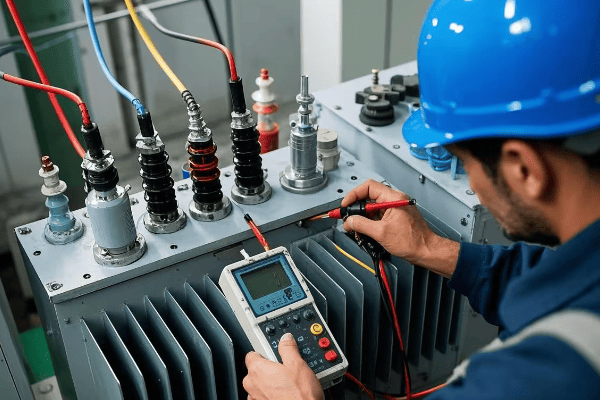
Let’s dive into the essential testing procedures and troubleshooting tips:
From Theory to Practice: Testing and Fine-Tuning Your Three-Phase System
-
No-Load Testing:
- Measure voltages between phases and phase-to-neutral
- Check for balanced voltages (should be within 1% of each other)
- Verify correct phase rotation
-
Load Testing:
- Gradually apply balanced load to the system
- Monitor voltage regulation under load
- Check for any unusual heating or noise
-
Insulation Resistance Testing:
- Use a megohmmeter to test insulation integrity
- Perform tests between windings and from windings to ground
- Compare results to manufacturer’s specifications
-
Power Quality Analysis:
- Use a power quality analyzer to check for harmonics
- Measure power factor under various load conditions
- Identify any voltage or current imbalances
-
Thermal Imaging:
- Use an infrared camera to check for hot spots
- Inspect connections and windings for abnormal heating
- Compare temperatures across all three phases
I once worked on a project where initial testing revealed a significant voltage imbalance. After careful troubleshooting, we discovered a loose connection in one of the main panel’s bus bars. Fixing this issue before putting the system into full operation prevented potential equipment damage and downtime.
Here’s a troubleshooting guide for common issues:
| Issue | Possible Causes | Troubleshooting Steps |
|---|---|---|
| Voltage Imbalance | Loose connections, uneven loads | Check all connections, redistribute loads |
| Incorrect Phase Rotation | Wiring errors | Swap any two phase connections |
| Overheating | Overloading, poor ventilation | Reduce load, improve cooling |
| Low Insulation Resistance | Moisture, contamination | Dry out equipment, clean connections |
| Harmonics | Non-linear loads | Install harmonic filters, redistribute loads |
| Power Factor Issues | Inductive loads | Add power factor correction capacitors |
| Noise or Vibration | Loose components, resonance | Tighten connections, check for mechanical issues |
Remember, thorough testing and prompt troubleshooting are key to ensuring the reliability and efficiency of your newly converted three-phase system. If you encounter issues you can’t resolve or if you’re unsure about any test results, don’t hesitate to consult with a professional. It’s always better to address potential problems early rather than risk system failure down the line.
Future-Proofing Your Setup: Adapting to Emerging Power Distribution Technologies?
As we wrap up our three-phase conversion project, it’s important to look ahead. How can we ensure our newly converted system remains relevant and efficient in the face of rapidly evolving power technologies?
Future-proofing your three-phase system involves considering smart grid integration, renewable energy compatibility, and evolving efficiency standards. Implementing flexible designs, incorporating digital monitoring systems, and staying informed about global trends can help your system remain efficient and compliant for years to come.

Let’s explore key strategies for keeping your system ahead of the curve:
Embracing the Future: Keeping Your Three-Phase System Cutting-Edge
-
Smart Grid Integration:
- Implement digital monitoring and control systems
- Consider compatibility with demand response programs
- Prepare for bi-directional power flow capabilities
-
Renewable Energy Compatibility:
- Design for integration with solar and wind power systems
- Consider energy storage integration for load balancing
- Implement inverter-friendly protection schemes
-
Efficiency Standards Evolution:
- Stay informed about upcoming efficiency regulations
- Plan for potential retrofits or replacements to meet future standards
- Consider ultra-high efficiency transformers for long-term savings
-
Advanced Materials and Designs:
- Explore amorphous core transformers for reduced losses
- Consider solid-state transformers for improved control and efficiency
- Investigate high-temperature superconducting transformers for specialized applications
-
Cybersecurity Considerations:
- Implement robust security measures for digital control systems
- Plan for regular security audits and updates
- Consider physical security measures for critical infrastructure
I recently worked on a project upgrading a manufacturing plant’s power system. We incorporated a flexible design that allowed for easy integration of planned solar installations and future energy storage systems. By thinking ahead, we created a system that not only met current needs but was also ready for the company’s future sustainability goals.
Here’s a table summarizing key future-proofing strategies and their implications:
| Strategy | Description | Benefits | Global Trends |
|---|---|---|---|
| Smart Grid Readiness | Implementing digital monitoring and control | Improved efficiency and grid stability | Rapid adoption in developed countries |
| Renewable Integration | Designing for solar and wind power compatibility | Reduced carbon footprint, potential cost savings | Growing worldwide, led by EU and China |
| Efficiency Standard Compliance | Planning for future efficiency requirements | Long-term cost savings, regulatory compliance | Increasingly stringent globally |
| Advanced Materials Adoption | Using new core materials and designs | Reduced losses, improved performance | Growing interest, especially in high-cost energy markets |
| Cybersecurity Implementation | Securing digital systems against threats | Protected operations, compliance with security standards | Critical focus in all regions |
| Modular Design | Creating systems that can be easily upgraded | Flexibility for future needs, reduced replacement costs | Gaining popularity in fast-evolving industries |
| Energy Storage Readiness | Preparing for battery or other storage integration | Improved reliability, peak shaving capabilities | Rapid growth, especially in areas with unstable grids |
| Power Quality Enhancement | Implementing harmonic mitigation and voltage stabilization | Improved equipment life, reduced downtime | Critical in sensitive industrial and data center applications |
Remember, the power industry is constantly evolving. By staying informed about emerging technologies and trends, and designing your system with flexibility in mind, you can ensure that your three-phase conversion investment continues to pay dividends well into the future.
Conclusion
Transforming your power distribution from single-phase to three-phase is a complex but rewarding process. By understanding the basics, carefully planning, prioritizing safety, and implementing best practices in conversion and testing, you can successfully unlock the power of three-phase electricity for your facility. Remember to consider future trends and technologies to ensure your system remains efficient and relevant for years to come.
Free CHBEB Transformer Catalog Download
Get the full range of CHBEB transformers in one catalog.
Includes oil-immersed, dry-type, pad-mounted, and custom solutions.
Quick Message
Request A free quote
We'd like to work with you
- +86 15558785111
- [email protected]
- +86 15558785111
What We Do
CHINA BEI ER BIAN (CHBEB) GROUP, with 218 million in registered capital, originated from Beijing Beierbian Transformer Group. Headquartered in Beijing for R&D, it operates major production bases in Nanjing and Yueqing, producing high-quality products.
Latest Product
address
BeiJing
No 3,RongJing East Road,BeiJing Economic Technological Development Area,BeiJing,China
JiangSu
No 7️Xiangfeng Road,Jiangning,NanJing,JiangSu,China
WenZhou
No.211, Wei 16 Road, Industrial Zone, Yueqing, Wenzhou, Zhejiang, China.
XiangYang Industrial Zone ,YueQing,WenZhou,ZheJiang,China
contact us
- [email protected]
- +86 13057780111
- +86 13057780111
- +86 15558785111
Copyright © Bei Er Bian Group


